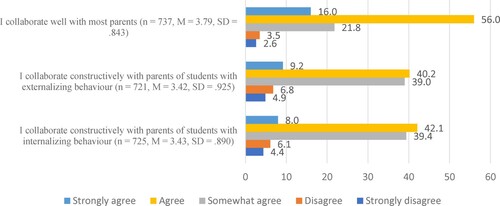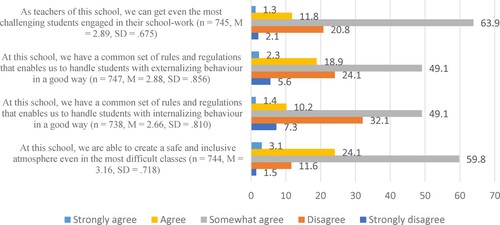Figures & data
Table 1. Number of schools in different categories of the survey sample.
Table 2. Sample characteristics.
Table 3. Principal component analysis with items from the perceived collective teacher efficacy scale, the Norwegian teacher self efficacy scale and self-designed items (Varimax Rotation with Kaiser Normalization) (n = 771).
Figure 1. Percentage distribution of answers on items comprising the factor negative teacher-parent collaboration (NTPC).

Figure 2. Percentage distribution of answers on items comprising the factor teacher self-efficacy in parental collaboration (TSEPC).

Figure 3. Percentage distribution of answers on items comprising the factor perceived collective teacher efficacy (PCTE).

Table 4. Significant findings from one -way ANOVA on three scales (dependent).
Table 5. Multiple regression analysis for negative teacher-parent collaboration.
